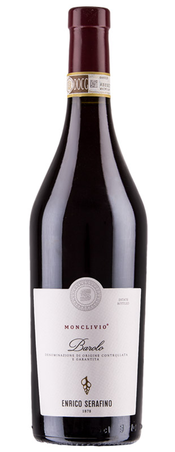 Barbaresco — is a major variety there, but the area lacks the renown of Barolo and Barbaresco, across the river. Within Roero, the Enrico Serafino winery in Canale, founded in 1878, is one of the most prominent producers.
Barbaresco — is a major variety there, but the area lacks the renown of Barolo and Barbaresco, across the river. Within Roero, the Enrico Serafino winery in Canale, founded in 1878, is one of the most prominent producers.
The Enrico Serafino winery is now owned by the Krause family, from the U.S. Midwest; the Krause family also owns Vietti in the Barolo zone. Although situated in Roero, the Enrico Serafino winery owns several Barolo vineyards. It is entitled to vinify the grapes in Roero, having been grandfathered in as an exception when the DOC/G regulation was enacted in 1967. In addition to Barolo, the winery produces a range of still and sparkling wines, including a white wine, Gavi di Gavi.
The Barolo ($40) and the Gavi ($17) are particularly well-priced. Gavi is Piedmont’s longstanding elite white wine. It’s made from the Cortese grape grown in vineyards around the town of Gavi in southeastern Piedmont, close to Genoa. Serafino’s Gavi di Gavi “Grifo del Quartaro” 2018 (a name that refers to an ancient Genovese coin) is far more approachable, fruitier and more flavorful than most Gavi wines I have tasted. Its fairly pronounced aroma is floral, fruity (apple, lemon, tangerine, pear) and herbal. It’s a dry wine, nearly full-bodied and unoaked. Although its acidity is high, this is not what you might call a “crisp white” because its texture is so rich and mouth-filling, thanks to several months of lees aging. Nor is it a “soft white,” thanks to a tangy, savory note that’s characteristic of Gavi. While floral and ripe-fruity notes dominate the nose, the palate features an unusual mix of tart fruits and juicy fruits, with the tangy notes adding an extra dimension.
The Enrico Serafino Barolo “Monclivio” 2015 is nothing if not Barolo. It’s a dry, full-bodied, red that’s high in acid and tannin and complexly perfumed, classically Barolo. Of course, many different expressions of Barolo exist today. This particular Barolo is rather traditional in style, because it is not rich in fruit and not rich in texture. When I first tasted it, I found it light and a bit thin, but with air — and this is also a classic feature of traditional Barolo — it softened and opened up, revealing its vivid aromas and flavors of strawberry, wild fennel, menthol and tar and its mouth-filling smoothness despite its tannin firmness. There’s purity of flavor and depth to this wine; in four or five years, it should be lovely. (In the meantime, drink this Barolo in a Burgundy glass and give it lots of air.)
The Monclivio Barolo derives from Serafino’s vineyards in Serralunga, Castiglione Falletto, Monforte and La Morra. Apart from the latter commune, these are areas that make strong, characterful Barolo. This wine shows itself as relatively more delicate than its origins might suggest, probably because of its vintage, 2015; the 2015 vintage has been said to give some wines a cool-vintage profile due to rain late in the season, despite plenty of heat earlier on. Its winemaking was traditional, with a long post-fermentation maceration (15 to 20 days), and aging in large oak, but with some 225-liter barriques as well. At $40, this is an excellent value.
Gavi di Gavi 2018, 90 Points
Barolo 2015, 91+ Points
